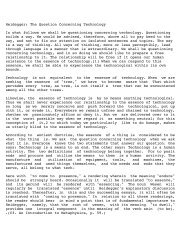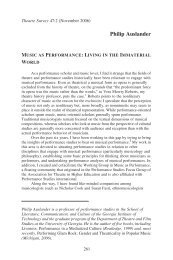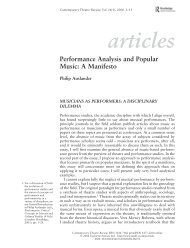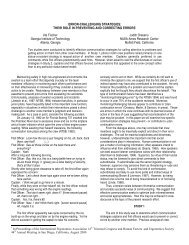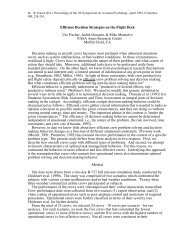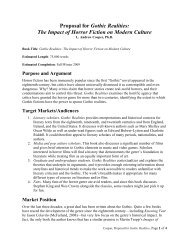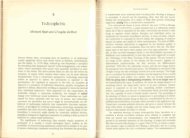INTERACTION DESIGN PRINCIPLES FOR INTERACTIVE ...
INTERACTION DESIGN PRINCIPLES FOR INTERACTIVE ...
INTERACTION DESIGN PRINCIPLES FOR INTERACTIVE ...
Create successful ePaper yourself
Turn your PDF publications into a flip-book with our unique Google optimized e-Paper software.
with a handheld remote control from across the room. This contrasts with the traditional<br />
“2-foot interface,” where the user sits at a desk in front of a monitor and keyboard. Users<br />
can use a wireless keyboard and mouse, but generally don’t have to, except to surf the<br />
Web from the couch or to clear the occasional error message.<br />
The “My TV” button will display an inset displaying the current channel the user<br />
is watching, plus buttons for selecting an EPG, a program search function, and a list of<br />
the last three shows recorded. If a TV is the primary or only display, the user can select a<br />
high-contrast background. Many users find this useful because the default blue-on-blue<br />
text of the first MCE interface was difficult to read on TV sets (Thurrott, 2004).<br />
The EPG (which, unlike subscription-based DVR services like TiVo and RePlay,<br />
is free) allows users to filter the cable guide to show just sports or movies, for example.<br />
Similarly, a listing of separate recorded episodes of the same program can be collapsed<br />
into a single listing, which can greatly help to reduce scrolling. In addition, users can<br />
search movies based on genres, rating, actors and directors, or by title, allowing for a<br />
sense of control over the viewing experience. Multiple tuner support allows users to<br />
watch a live TV show while recording another program simultaneously (Thurrott, 2004).<br />
One of the ongoing concerns about watching television on the computer had been<br />
picture quality. Belfiore admits that “the display hardware and the drivers have to be of<br />
high quality… the truth is, no one was really connecting PCs to TVs in high volume until<br />
we released Media Center” (quoted in Thurrott, 2004). MCE, however, starting with the<br />
2004 edition, features a display calibration wizard, a series of videos that users can watch<br />
while setting aspects such as screen centering and sizing, aspect ratio, contrast,<br />
brightness, and color balance. However, Matthew Elliott, a reviewer from CNET, says<br />
106



